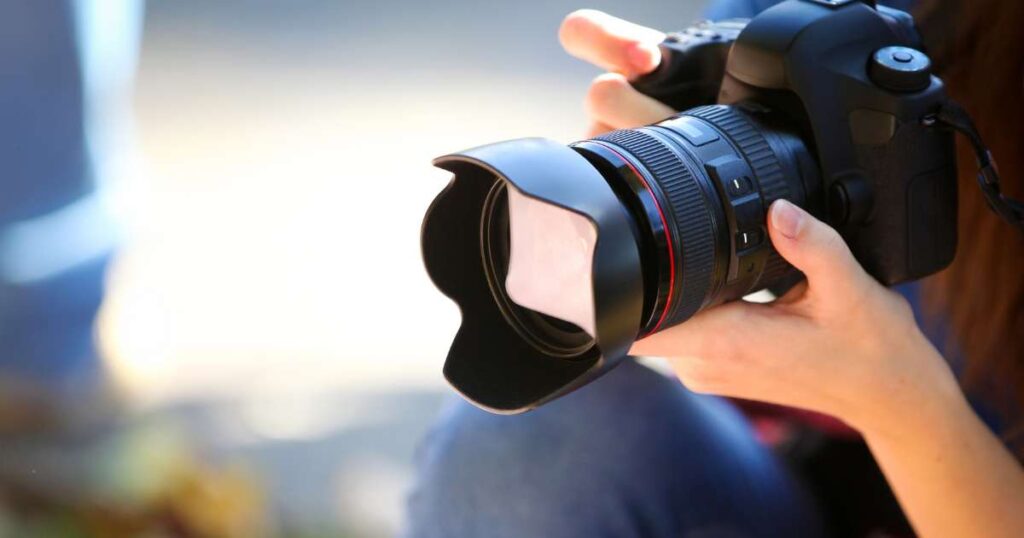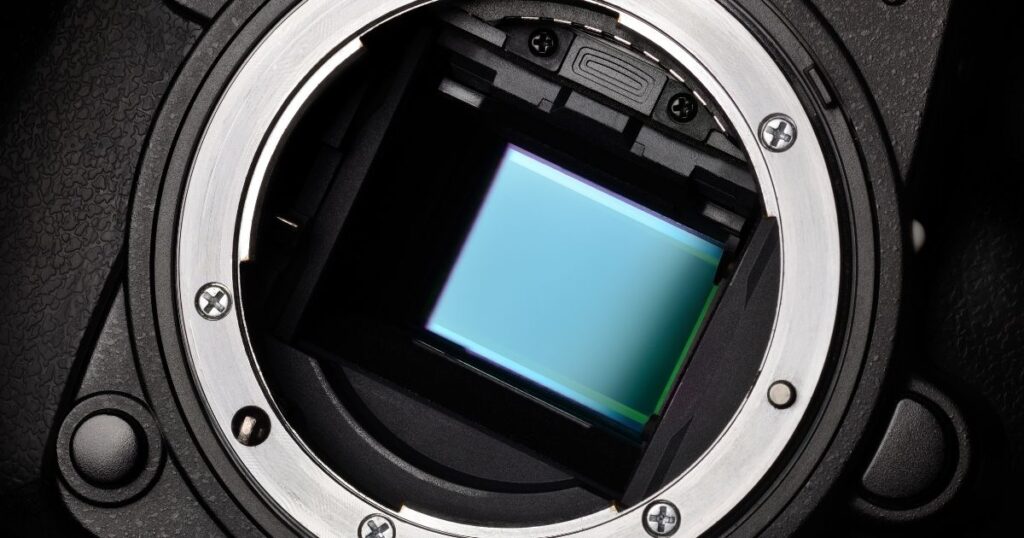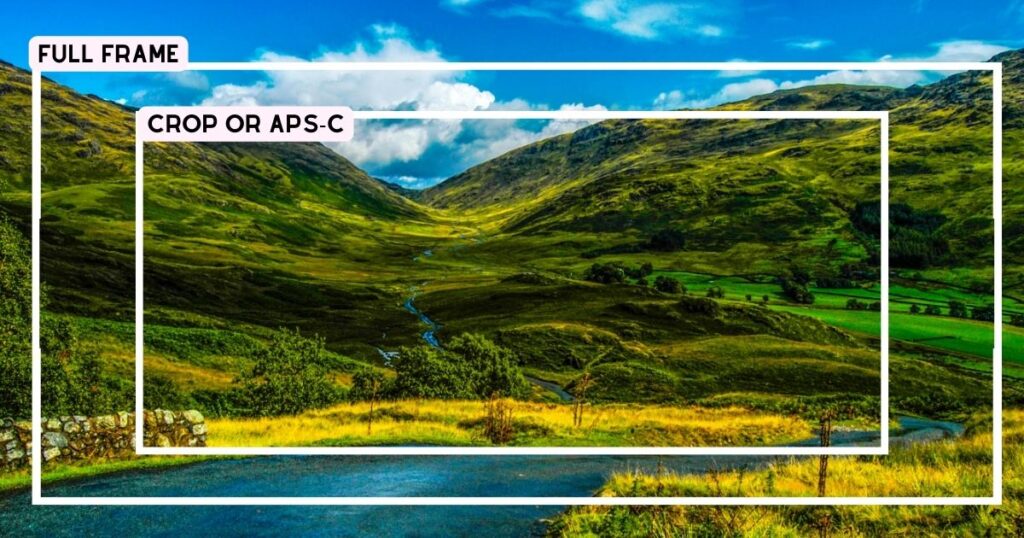Full frame vs Crop sensor

In the world of photography, the full-frame vs. crop sensor plays a vital role in determining picture quality in different kinds of situations. But there is always a dilemma for new buyers about which type of camera to buy. Full-frame sensors are pricier than crop-frame sensors, but there are better ones. Depending on the photography requirements, any one of them will suit you. We will clearly explain the details of both full-frame and crop sensor cameras, which will help you make an informed decision.
What is a full-frame sensor?: A Window to Expansive Imaging
A full-frame sensor, often regarded as the ideal standard in digital photography, mirrors the dimensions of a 35mm film frame. With approximate measurements of 36mm x 24mm, these sensors boast a larger surface area, enabling them to capture more light. So here the question is: why did they fix 35mm as a full frame? Because the 35 mm lens format was widely adopted at that time across the world and the film industry for both picture and video formats, later manufacturers needed to create lenses compatible with those 35mm lens cameras, and they were major consumers then.
Advantages and disadvantages of full-frame cameras

Wider camera sensors and lenses perform significantly better, particularly in low-lighting conditions. Makes an excellent choice for professional photography.
But they come with a higher premium tag, and they are difficult to travel and not easy to carry around because they are not portable
Advantages
1)Wide angle shorts(more field view can be captured)
2)Low light performance. (More light will fall on-sensor due to its large size)
3)No crop (High resolution compared to crop sensor)
Disadvantages
1)High price.- Full frame sensor cameras are expensive compared to APS-C or Crop sensors.
2)Portability-they are not compact due to their size.
What is a Crop sensor? (Also known as APS-C, Micro Four Thirds): Compact Powerhouses with a Cost Advantage.

The Corp sensor is the cropped version of the full-frame sensor, which means anything below full-frame (below 35mm) is a crop sensor. Full-frame sensors are fixed in size, whereas crop sensors come in different sizes. There is another version of a crop sensor, also known as micro four-thirds, which is a bit more copper version of a crop sensor. General crops The sensor size compared to the full-frame sensor is 1.5x smaller. This applies to Sony and Nikon. The Canon’s crop sensor size is 1.6x. For example, if you are shooting on an APS-C camera with a 50-mm lens (1.5×50), then the focal length is 75 mm. For micro-four-thirds, the crop factor is 2x (almost half) times smaller than a full-frame sensor. Before purchasing a camera, please look into the crop factor of the particular manufacturer.
Advantages and disadvantages of crop sensor or APS-C cameras
Crop sensors or APS-C cameras and lenses are compact and more affordable. Even though compact, their image quality is sharper; however,full-frame sensors have an edge in low-light performance. Crop sensors absorb less light compared to full-frame. These are good for beginner enthusiasts who want to learn photography.
Advantages
1) Compact(travel friendly due to its small size and lightweight)
2) Budget-friendly(More affordable options available in the market including lenses)
3)Crop sensor(sometimes it’s an advantage and sometimes it’s a disadvantage because it’s a crop sensor is already zoomed in so it’s good for closeup shots of wildlife, and sports.)
Disadvantage
1)Low image resolution-image is cropped when compared to the full frame so less resolution
2)Low light performance is a tad bit lacking.- the sensor is smaller than the full frame so light flow on the sensor is less.
So Full frame vs Crop sensor which one to choose and what key factors to consider?

You can see the above image Full frame sensor has a wider image and APS-C has a little cropped image
What is the purpose of the camera?
If you are planning to take the camera for weddings, events, or filmmaking, and want excellent low-light photography, and want to shoot wide landscapes. then Full Frame is the perfect choice for you. Full-frame cameras are considered to be the industry’s top-notch standard.
If you are beginning to start or want to learn photography and need to carry it during travel without size constraints, and want to capture family and friends gatherings and if you are a vlogger who does not want to spend much with great picture quality then a crop sensor is the right choice for you.
Budget
Take your budget into consideration; generally, full-frame cameras and lenses are on the pricey side. It’s like investing in something that will be more beneficial to professionals.
A beginner who wants to learn photography can invest in something other than an industry-standard camera in the initial stage. If you are on a tight budget, then a crop sensor is the right choice for you.
Which camera will make you a better photographer?
Photography skills do not depend on the type of camera you have. If you have the skill, you can take great pictures even with the latest mobile camera. If you edit pictures in Lightroom by adjusting colour balance, contrast, and other required changes, the picture captured on any camera will look professional; only the resolution may differ. Many professional photographers shoot a lot of weddings and filmmaking on crop sensors. So there is no rule to shoot on a particular camera; depending on their requirements, skills, and budget, you can pick one of the cameras.
Conclusion
The choice between a full-frame and a crop sensor camera is ultimately a subjective one. Your tastes, your ability to pay for it, and the particular needs of your photographic projects all play a role. Both kinds of sensors are advantageous in their own right and meet a variety of purposes in the photographic world.
Many experts and hobbyists who are committed to improving their talents choose full-frame sensors because of their outstanding low-light performance, large fields of view, and excellent picture quality. On the other hand, crop sensors are an excellent choice for novices or those who value mobility since they provide a more cost-effective and portable alternative without compromising picture quality.
Choosing between a full-frame sensor and a crop sensor
Choosing between a full-frame sensor and a crop sensor ultimately comes down to your unique requirements and artistic vision. Making the best choice for your photography will be aided by your understanding of your needs. It’s amazing to watch how full-frame and crop sensor cameras continuously enhance their functionality, Especially given how quickly technology is developing. With even more tools at their disposal, photographers can now really capture the planet’s breathtaking beauty via their lenses.